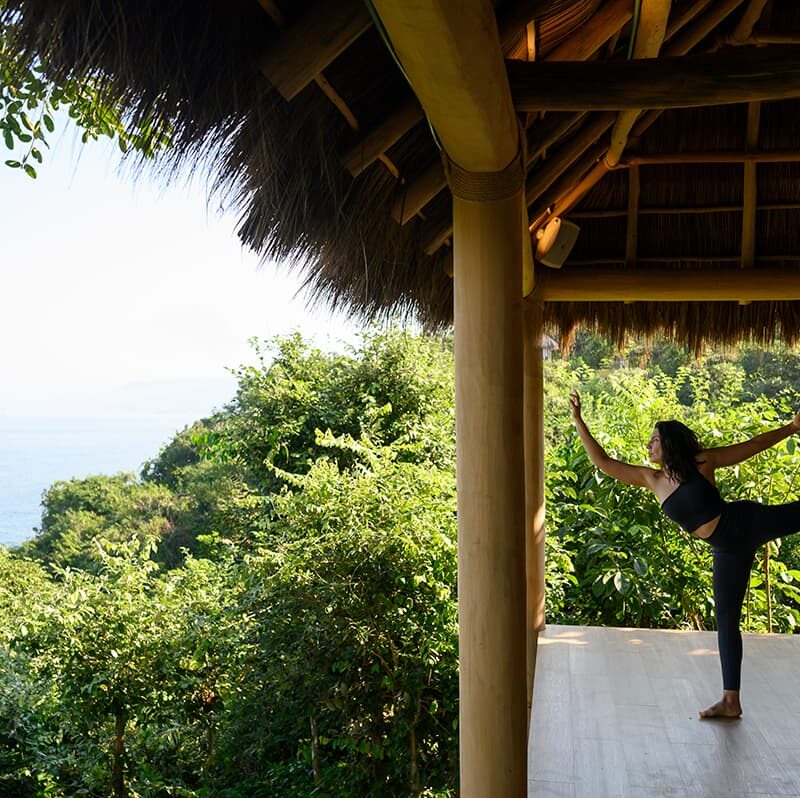Meditation Shamata is a way to work with our mind using our mind. There are various types of meditation and there is not a sole “proper way” to do it.
Xinalani's All Inclusive Packages
Meditation is frequently misunderstood. It is not, as often thought, only an exercise to relax, or a state of trance; it is not even making your mind go blank. Meditation is a way of expanding our consciousness, not by reducing it to a semi-conscious state.
Beautiful Eco Chic Rooms and Beach Casitas
In reality, meditation requires a lot of work. Beginning with the posture: our bodies are not used to keeping our legs crossed and our back straight for a long period of time. When our body starts to hurt, meditating becomes a hard task. Later on, when we finally succeed to sit properly and comfortably, we become aware that our mind won’t take any orders; it has its own patterns, and it’s not used to concentrating for more than a few seconds.
Meditation won’t be the aspirin you’re looking for to immediately feel better; it is a path full of challenges and it can become very frustrating.
When delving into Buddhist traditions, all meditational techniques can be classified into two different types according to their progressive purpose.
The first technique is Shamata, which literally means “peace” in Sanskrit. This type of meditation calms our mind and makes us more conscious of its patterns, therefore expanding our perspective and promoting positive emotions. Shamata meditation helps us to clean out all the mess and turbulence in our thoughts.
Most Shamata techniques use an object of concentration: an image, a lit candle, breathing, etc.
Focusing on our breathing is a very common technique, as it is available for anyone at any time. When we develop a quality of concentration, we start feeling calm and we acquire consciousness.
This type of meditation is necessary for the second type, Vipassana, to occur. Calm and positivity, as many precious qualities, are still conditioned to change. Vipassana meditation helps us to have a clear vision and the ultimate objective is to cause “Paravittri”, which is a profound turn in our deep consciousness. Once Paravittri has occurred, there’s no way to get back to old ways of looking at things.
According to Buddhists, Vipassana helps us to see things as they “really are”. After achieving Shamata’s state of peace and clarity, one then needs to focus on something that represents an aspect of the ultimate reality (impermanence, constant change, universal love, etc.), such as an image, an object, a word, etc. The mediator has not only to understand the concept intellectually but to let it impregnate in its whole experience. This is how a genuine and clear vision can occur.
There’s a lot more to say about meditation and its countless techniques. The most important thing is to have our intention clear when meditating: if we’re using it as a tool to improve our daily physical and mental states, or if we’re searching for a deep spiritual transformation, for example. Keep in mind that it is a slow demanding road with a lot of obstacles, but also a path full of great discoveries and accomplishments.
Take a life-changing habit and next time you are at Xinalani let our experienced meditation instructor teach you the art of mindfulness with our meditation classes for a greater life!
BIBLIOGRAPHY Paramananda, Cambia tu Mente, Centro Budista de Valencia, 2010. Budismo.com, Centro Budista de la Ciudad de México: http://www.budismo.com/ *Don’t miss our article about Why Do Yoga?
About the Author

Andrea Pieck is a part of the Xinalani Family. She is a yoga and meditation practitioner, and she enjoys reading and writing a lot. She’s particularly passionate about Philosophy, seeking always for new perspectives and ideas.
























